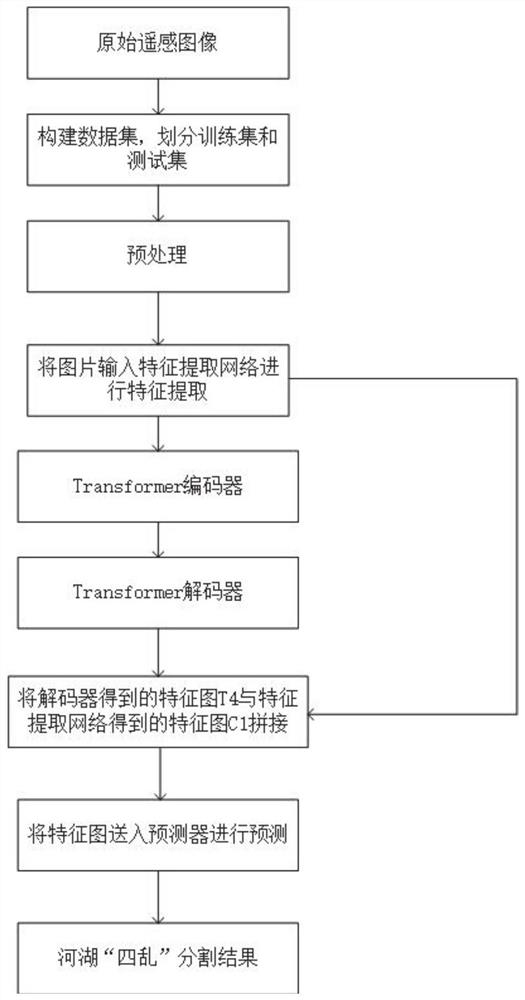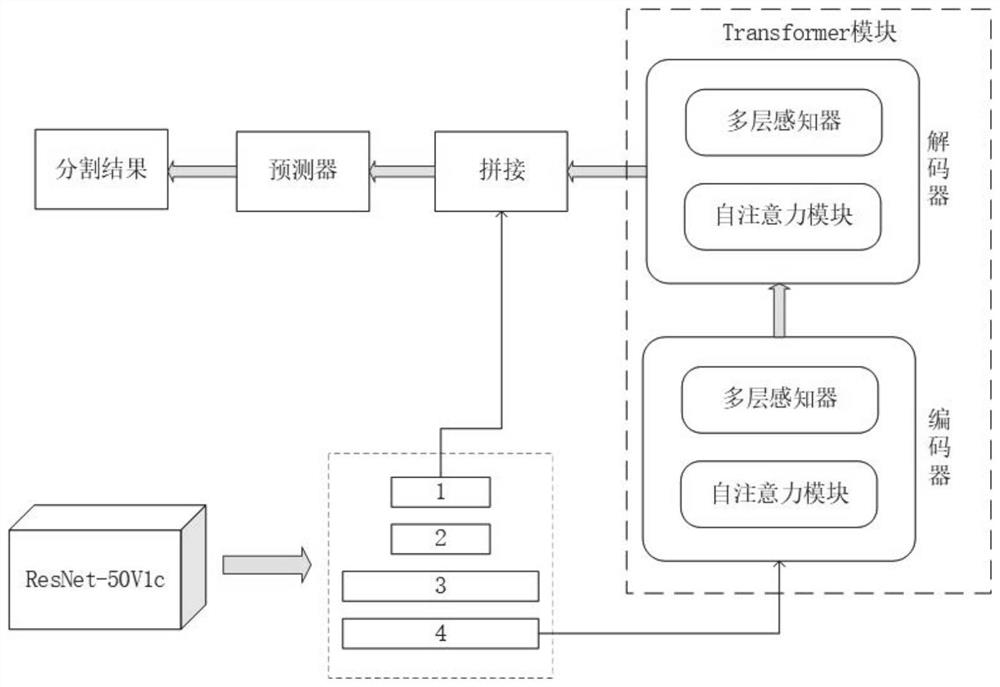River and lake remote sensing image segmentation method and system based on convolutional neural network and Transform
A convolutional neural network and remote sensing image technology, applied in the field of river and lake remote sensing image segmentation methods and systems, can solve the problems of affecting the accuracy of segmentation, target loss, and small coverage area, and achieve improved speed and accuracy, good effects, Robust effects to environmental changes
- Summary
- Abstract
- Description
- Claims
- Application Information
AI Technical Summary
Problems solved by technology
Method used
Image
Examples
Embodiment 1
[0034] Such as Figure 1-2 As shown, the present embodiment provides a method for segmenting river and lake remote sensing images based on convolutional neural network and Transformer, including:
[0035] S1: Obtain remote sensing images of rivers and lakes containing category labels, and construct a training set;
[0036] S2: preprocessing the training set;
[0037] S3: Use convolutional neural network to extract multi-layer feature maps on the preprocessed training set;
[0038] S4: Use the Transformer encoder to extract the attention feature for the extracted feature map of the last layer, and use the Transformer decoder to obtain the self-attention feature map for the attention feature;
[0039] S5: After splicing the self-attention feature map and the first layer feature map, train the image segmentation model;
[0040] S6: Based on the trained image segmentation model, the category segmentation result of the target in the remote sensing image of the river and lake to ...
Embodiment 2
[0059] This embodiment provides a river and lake remote sensing image segmentation system based on convolutional neural network and Transformer, including:
[0060] The data acquisition module is configured to acquire remote sensing images of rivers and lakes containing category labels, and construct a training set;
[0061] The feature map extraction module is configured to extract multi-layer feature maps using a convolutional neural network for the training set;
[0062] The Transformer module is configured to use a Transformer encoder to extract attention features for the extracted last layer feature map, and use a Transformer decoder to obtain a self-attention feature map for the attention features;
[0063] The model training module is configured to train the image segmentation model after splicing the self-attention feature map and the first layer feature map;
[0064] The image segmentation module is configured to obtain the category segmentation result of the target ...
PUM
 Login to View More
Login to View More Abstract
Description
Claims
Application Information
 Login to View More
Login to View More - R&D
- Intellectual Property
- Life Sciences
- Materials
- Tech Scout
- Unparalleled Data Quality
- Higher Quality Content
- 60% Fewer Hallucinations
Browse by: Latest US Patents, China's latest patents, Technical Efficacy Thesaurus, Application Domain, Technology Topic, Popular Technical Reports.
© 2025 PatSnap. All rights reserved.Legal|Privacy policy|Modern Slavery Act Transparency Statement|Sitemap|About US| Contact US: help@patsnap.com



